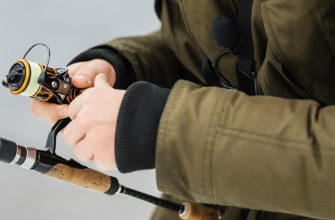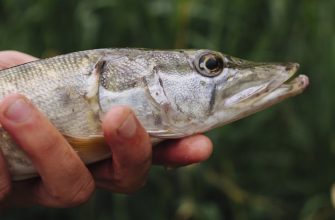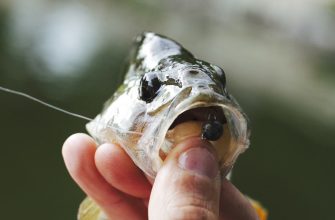- What is the Best Type of Fishing Line for Trout?
- Versatile and Reliable
- Multiple Colors for Different Conditions
- Available and Inexpensive Options
- Slow Sink for Natural Presentation
- What is The Best Line for Trout Fishing?
- Monofilament Line
- Fluorocarbon Line
- Braided Fishing Line
- Fly Fishing Line
- How strong should your line be for Trout?
- Should You Go Trout Fishing with 4lb or 6lb Line?
- 2lb – Small Trout
- 4lb – Small to Medium Trout
- 6lb – Medium to Large Trout
- 8lb+ – Large Trout
- Basics of the Trout Line Setup
- Traditional Fishing Trout Setup
- Fly Fishing Trout Setup
- What is the perfect line setup for Trout using Conventional Tackle?
- The Reel: Choosing the Right Size
- The Rod: Light-Medium Action for Precision
- The Mainline: Strength and Sensitivity
- The Leader: Fluorocarbon for Stealth
- The Knot: Alberto Knot for Strength
- What is the perfect line setup for Trout using Fly-tackle?
- Floating Line
- Sinking Line
- Sinking Tip Line
- Leader and Tippet
- What is the Best Tippet Size for Trout?
- What Tippet Material Is Best for Trout?
- Fly-fishing is Trial and Error in its Most Refined State
- Other Angling Line Tips for Catching Trout
- Select the Right Color
- Watch Your Weight
- FAQs
- Q: What is the best fishing line for trout?
- Q: How does a fluorocarbon angling line differ from other types of angling lines?
- Q: What are the advantages of using a fluorocarbon leader when fishing for trout?
- Q: Can a braided line be used for trout fishing?
- Q: How important is the angling line’s weave and structure when trout fishing?
- Q: What factors should I consider when selecting the best angling line for trout?
- Q: How does direct sunlight affect the visibility of the angling line when trout fishing?
- Q: Can I use a fluorocarbon fishing line when fishing with a spinner for trout?
- Q: What are the key features to look for in the best angling line for trout in 2024?
- Q: How can I make sure my angling line is the best possible choice for trout fishing?
When targeting trout, you’ll want an angling line that is almost invisible in clear water, allowing you to take advantage of their keen eyesight. One of the best lines for trout fishing is the fluorocarbon angling line. This type of line is known for its low visibility and high sensitivity, making it perfect for fly fishing.
When choosing an angling line for trout, consider the size of the fish you’re targeting. A lighter line is often preferred, as it allows for delicate presentations and increases your chances of a successful strike. Look for a line that is strong and durable, yet still light enough to handle the size of trout you’re fishing for.
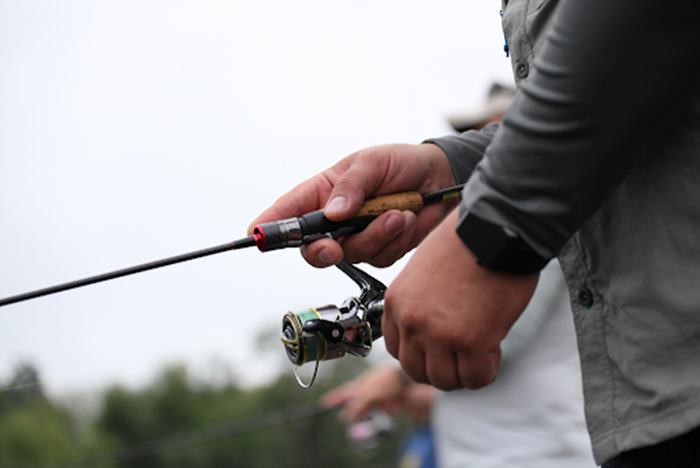
Another important factor to consider is the line setup. The best angling lines for trout are often made with multiple strands that are tightly woven together. This not only increases the strength and durability of the line but also provides added elasticity. The elasticity of the line helps to absorb the shock of a trout’s sudden movements, reducing the likelihood of the line breaking.
When fishing for trout, it’s also important to take into account the conditions you’ll be fishing in. If you’ll be fishing in direct sunlight, you may want to choose an angling line with a color that blends in with the surroundings. This will help to further minimize the visibility of the line and increase your chances of a successful catch.
When selecting the best angling line for trout, consider a fluorocarbon line that is practically invisible in clear water. Look for a light line, yet strong enough to handle the size of trout you’ll be targeting. Pay attention to the line setup and choose a line that provides both strength and elasticity. By following these guidelines, you’ll be well-equipped to enjoy a successful trout-angling experience.
What is the Best Type of Fishing Line for Trout?
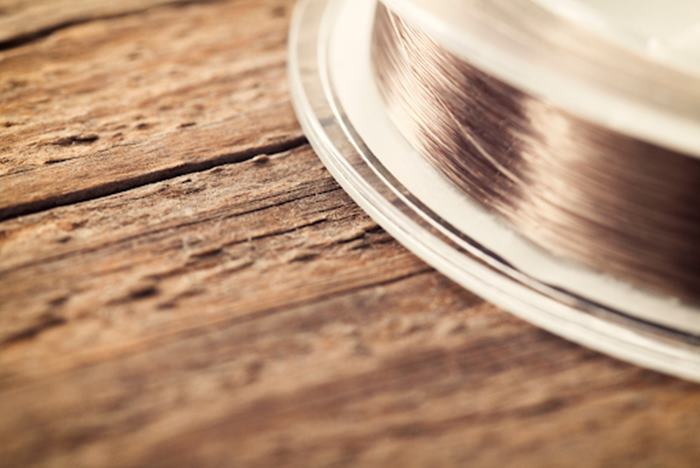
Versatile and Reliable
When it comes to trout angling, versatility is key. You want an angling line that can adapt to various fishing conditions and techniques. The best angling lines for trout are known for their versatility, allowing you to use them for different fishing styles such as bait fishing, fly fishing, or trolling.
Multiple Colors for Different Conditions
Trout are known for their keen eyesight, and the color of your angling line can make a difference in your success rate. Opting for an angling line that comes in multiple colors gives you the advantage of adjusting to different water conditions. Clear or low-visibility lines work well in clear water, while high-visibility lines are ideal for fishing in murky waters.
Available and Inexpensive Options
As an avid trout angler, you want an angling line that is readily available and doesn’t break the bank. Luckily, there are plenty of affordable options on the market that offer excellent performance. Look for angling lines that offer a good balance between quality and affordability, ensuring you get the most bang for your buck.
Read more: The Best Spots for Outdoor Fishing Fun in National Parks Across America
Slow Sink for Natural Presentation
Trout are known for their cautious nature, and a natural presentation is crucial to entice them. Choosing an angling line that has a slow sink rate can mimic the natural movement of the bait, increasing your chances of a successful catch. Slow-sinking lines allow your bait to stay in the strike zone longer, enticing even the most skeptical trout.
What is The Best Line for Trout Fishing?
Monofilament Line
Monofilament line is a popular choice among trout anglers. It offers several advantages, including:
- Pros:
- Versatility: The monofilament line is appropriate for various fishing techniques, including bait fishing, fly fishing, and spinning.
- Buoyancy: It floats on the water’s surface, making it ideal for topwater fishing.
- Cost-effective: The monofilament line is generally more affordable compared to other types of angling lines.
- Cons:
- Stretch: Monofilament has more stretch compared to other lines, reducing sensitivity and hook-setting power.
- Visibility: It is more visible in the water, which may make trout more cautious.
Fluorocarbon Line
Fluorocarbon line is another option to consider for trout angling. Here are its pros and cons:
- Pros:
- Invisibility: Fluorocarbon has excellent light refraction properties, making it nearly invisible underwater.
- Abrasion resistance: It is highly resistant to abrasion, which is beneficial when fishing in rocky areas.
- Sensitivity: Fluorocarbon line offers excellent sensitivity, allowing anglers to detect subtle bites.
- Cons:
- Stiffness: Fluorocarbon is stiffer than monofilament, which may affect lure action.
- Cost: It is generally more expensive than monofilament and other lines.
Braided Fishing Line
The braided angling line is known for its exceptional strength and durability. Consider the following when using it for trout angling:
- Pros:
- Strength: The braided line offers high tensile strength, allowing anglers to handle larger trout and navigate challenging fishing environments.
- Sensitivity: It has minimal stretch, providing excellent sensitivity for detecting even the slightest nibbles.
- Durability: The braided line is resistant to abrasion and can withstand tough fishing conditions.
- Cons:
- Visibility: The braided line is highly visible in the water, which may spook trout in clear streams.
- Knots: It can be challenging to tie knots with a braided line due to its slick surface.
Fly Fishing Line
Fly fishing has its dedicated line type, designed specifically for casting lightweight flies. Consider the following points when choosing a fly angling line for trout:
Fly angling line comes in different weights, ranging from 1 to 12, with lower numbers representing lighter lines. The best line weight for trout angling depends on factors such as the size of the trout, fishing conditions, and casting distance.
Now that you have a better understanding of the different types of angling lines, you can make an informed decision when selecting the best line for trout angling. Remember to consider the specific fishing techniques, water conditions, and personal preferences to optimize your chances of a successful trout angling experience.
How strong should your line be for Trout?
The strength of your angling line for trout depends on various factors, including the size of the trout you are targeting and the fishing conditions. As a general guideline, an angling line with a test strength of 4 to 8 pounds is appropriate for most trout angling situations. However, if you are targeting larger trout or fishing in heavy cover, you may opt for a stronger line with a test strength of 10 to 12 pounds.
When selecting the line strength, it is essential to strike a balance between strength and sensitivity. Too heavy a line may reduce sensitivity and affect the presentation of your bait or lure, while a line that is too light may break easily when fighting a larger trout.
Should You Go Trout Fishing with 4lb or 6lb Line?
2lb – Small Trout
Using a 2lb line is ideal for targeting small trout. These lightweight lines allow for delicate presentations and offer excellent sensitivity, enabling you to detect even the slightest nibble. When fishing for smaller trout, such as brook trout or rainbow trout, a 2lb line can provide the finesse required for a successful catch.
4lb – Small to Medium Trout
When targeting small to medium-sized trout, stepping up to a 4lb line is a wise choice. This slightly stronger line offers increased durability and can handle the fight of larger trout. It strikes a balance between finesse and strength, making it versatile for various trout species and fishing conditions.
6lb – Medium to Large Trout
For anglers targeting medium to large trout, a 6lb line is recommended. This heavier line provides the necessary strength to reel in bigger fish while still offering reasonable sensitivity. When fishing in waters with larger trout species, such as brown trout or lake trout, a 6lb line can handle the challenge and increase your chances of success.
8lb+ – Large Trout
When pursuing trophy-sized trout, such as trophy brown trout or steelhead, it’s advisable to use a line with a test strength of 8lb or higher. These heavyweight lines offer the durability and strength needed to handle the aggressive fights of large trout. With an 8lb+ line, you can confidently battle these giants and increase your chances of landing that trophy fish.
Basics of the Trout Line Setup
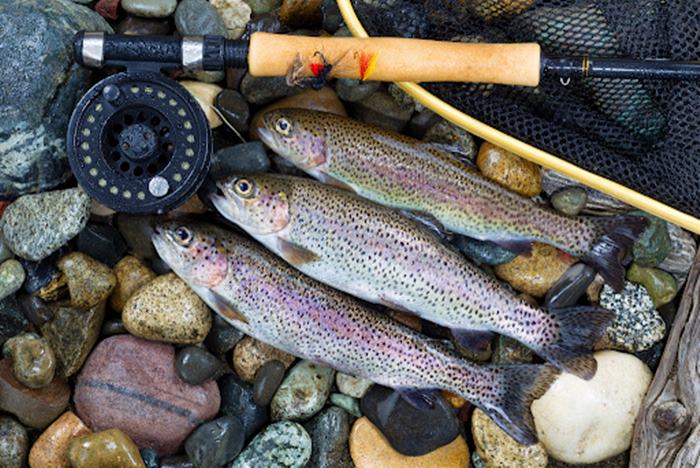
When it comes to trout angling, having the right line setup is crucial. In this article, we will explore two popular setups: the traditional fishing trout setup and the fly fishing trout setup. Let’s dive in!
Traditional Fishing Trout Setup
The traditional fishing trout setup involves a few key components:
- Fly line: This is the main line that you will cast into the water.
- 8 – 12 ft leader: Attach the leader to the fly line using a blood knot. The leader acts as a connection between the fly line and the rest of the setup.
- Indicator: Place the indicator approximately 6-8 inches from the fly line. The indicator helps you detect when a fish bites.
- 3-5 ft tippet: Use a 5x to 6x tippet and attach it to the leader with a barrel swivel or double surgeon knot. The tippet is the final section before the fly.
- Fly: Choose a suitable fly based on the trout’s preferences and the fishing conditions.
Fly Fishing Trout Setup
Another popular setup for trout angling is the fly fishing trout setup. Here’s what you need:
- Monofilament line: Use the monofilament line as your main line for this setup.
- Bobber stop: Use a bobber stop knot to secure the bobber stop on the line. The bobber stop helps adjust the depth at which your bait or fly will be presented.
- Indicator bead: Attach an indicator bead to the line. This will serve as a visual indicator when a fish takes the bait.
- Slip bobber (optional): If desired, you can add a slip bobber above the indicator bead for enhanced visibility.
- Sliding sinker/split shot: Attach a sliding sinker or split shot to the line to provide weight and help your bait or fly sink.
- Barrel swivel: Use a barrel swivel to connect the main line with the leader.
- 1-2 ft Leader: Attach a leader to the barrel swivel. The leader should be around 1-2 ft in length.
- Size 8-14 hook/trout lure: Choose a suitable hook or trout lure to attract the trout.
What is the perfect line setup for Trout using Conventional Tackle?
The Reel: Choosing the Right Size
When targeting trout with conventional tackle, using a 2000 to 3000-size reel is ideal. This size provides a good balance of line capacity and weight, allowing for smooth casts and efficient line retrieval. Additionally, the reel should have a reliable drag system to handle the bursts of speed that trout are known for.
The Rod: Light-Medium Action for Precision
To effectively present bait or lures to trout, a 6-7 ft long light-medium action fishing rod is recommended. This rod provides the right balance of sensitivity and strength, allowing anglers to detect subtle bites while still having enough power to handle larger trout. Look for a rod that feels comfortable in your hands and has a responsive tip for accurate casts.
The Mainline: Strength and Sensitivity
Choosing the right mainline is crucial when targeting trout. A 12 lb braided mainline offers the perfect combination of strength and sensitivity. Braided lines have minimal stretch, allowing anglers to feel even the slightest nibble from a trout. Additionally, the thin diameter of braided lines enhances casting distance and accuracy.
The Leader: Fluorocarbon for Stealth
Trout are known for their keen eyesight, making it essential to use a fluorocarbon leader. A 6 ft long 8 lb fluorocarbon leader provides the perfect balance of invisibility and strength. Fluorocarbon is virtually invisible underwater, allowing your bait or lure to appear more natural to the trout. It also has excellent abrasion resistance, ensuring that you can land that trophy trout without the leader breaking.
The Knot: Alberto Knot for Strength
When connecting the braided mainline to the fluorocarbon leader, the Alberto Knot is highly recommended. This knot provides exceptional strength and retains a low profile, allowing for smooth casts and minimal interference with your presentation. It is important to practice tying the Alberto Knot before hitting the water to ensure its proper execution.
What is the perfect line setup for Trout using Fly-tackle?
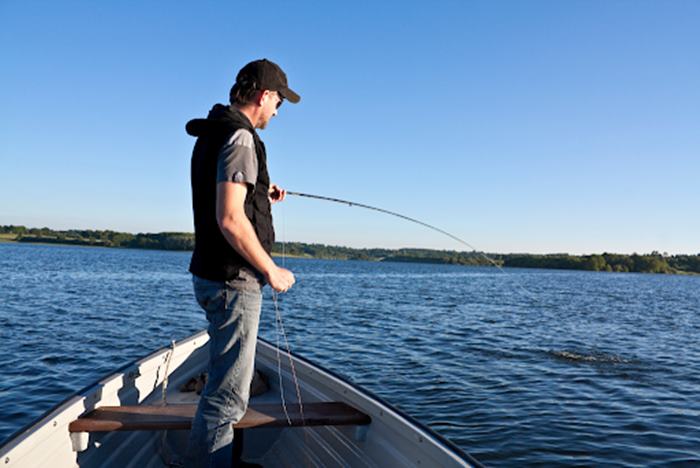
Floating Line
A floating line is an excellent choice for trout angling, especially in calm waters. It allows your fly to stay on the surface, mimicking natural insects and enticing trout to strike. Floating lines are versatile and appropriate for various fly patterns and fishing techniques.
Sinking Line
In certain situations, such as when fishing in deep pools or fast-moving currents, a sinking line can be more effective. Sinking lines are designed to get your fly down to the desired depth quickly. They come in different sink rates, allowing you to adjust your presentation based on the water conditions and the trout’s feeding behavior.
Sinking Tip Line
A sinking tip line combines the benefits of both floating and sinking lines. It has a sinking section at the tip, which helps your fly to reach the desired depth while keeping the rest of the line afloat. This allows for precise control of your presentation and is particularly useful when fishing in streams with varying depths.
Leader and Tippet
The leader and tippet are crucial components of your line setup. The leader is the tapered section of the line that connects the fly line to the tippet. It helps to transfer energy from the fly line smoothly, allowing for accurate and delicate presentations. The tippet is the final section of the leader and is responsible for attaching the fly. It should be thin and transparent to avoid spooking trout.
What is the Best Tippet Size for Trout?
The best tippet size for trout angling depends on various factors, including the size of the flies you are using and the trout’s feeding behavior. As a general guideline, lighter tippet sizes ranging from 4X to 6X are appropriate for most trout-angling situations. However, if you are targeting larger trout or fishing in heavily pressured waters, you may need to use heavier tippet sizes.
What Tippet Material Is Best for Trout?
When it comes to tippet material, fluorocarbon and nylon are the most commonly used options for trout angling. Fluorocarbon is known for its low visibility in the water, making it an excellent choice for wary trout. Nylon, on the other hand, is more affordable and offers good strength and knotability. Ultimately, the choice between fluorocarbon and nylon depends on your personal preference and fishing conditions.
Fly-fishing is Trial and Error in its Most Refined State
Fly-fishing for trout is a captivating and rewarding experience. It requires skill, patience, and a willingness to adapt to changing conditions. Remember, the perfect line setup for trout using fly tackle may vary depending on factors such as the location, time of year, and trout species. Don’t be afraid to experiment and adjust your setup to find what works best for you.
Other Angling Line Tips for Catching Trout
Select the Right Color
When it comes to trout angling, selecting the right color angling line can make a significant difference in your success. Different colors can mimic the natural surroundings and increase your chances of attracting trout. Here are a few color options to consider:
- Clear or Transparent: This is a versatile color that works well in most water conditions. It is less likely to spook trout and can be a good choice when fishing in clear water.
- Green: Green angling lines blend well with aquatic vegetation and are ideal for fishing in areas with dense plant cover.
- Brown: Brown angling lines can mimic the color of muddy or murky water, making them effective in such conditions.
- Yellow: Yellow angling lines offer high visibility, making it easier to detect bites and track the movement of your line.
Experimenting with different colors and observing the trout’s response can help you determine the most effective color for your fishing expedition.
Watch Your Weight
Another crucial factor to consider when trout angling is the weight or thickness of your angling line. The weight of the line affects how deep your bait or lure can reach and how easily it can be detected by trout. Here are some tips on choosing the right weight:
- Lightweight Line: Lighter lines, such as the 2-6 lb test, are appropriate for smaller trout and fishing in clear and shallow waters.
- Medium-Weight Line: Medium-weight lines, around 8-12 lb test, offer versatility and can handle a wider range of trout sizes and fishing conditions.
- Heavyweight Line: Heavier lines, 14 lb test and above, are ideal for targeting larger trout or when fishing in areas with heavy cover or fast-moving water.
Consider the size and behavior of the trout you’re targeting, as well as the fishing environment when selecting the appropriate line weight.
Remember, while choosing the right color and weight can increase your chances of catching trout, it’s also essential to practice proper casting techniques, use the right bait or lure, and be patient.
Happy fishing!
FAQs
Q: What is the best fishing line for trout?
A: The best angling line for trout depends on various factors such as the fishing conditions, the water clarity, and the size of the fish. However, the fluorocarbon angling line is often recommended for trout angling due to its practically invisible nature in water, making it ideal for fishing in clear water.
Q: How does a fluorocarbon angling line differ from other types of angling lines?
A: Fluorocarbon angling line has a refractive index close to that of water, making it less visible to fish in the water. This unique property sets it apart from other angling lines, giving anglers a better chance of catching trout, especially in clear water conditions.
Q: What are the advantages of using a fluorocarbon leader when fishing for trout?
A: Using a fluorocarbon leader provides several benefits, such as making the angling line less visible to trout in clear water, increasing the chances of a strike, and reducing the likelihood of the line being noticed by cautious trout.
Q: Can a braided line be used for trout fishing?
A: Yes, braided line can be used for trout angling. Its strength and sensitivity make it a good choice, especially when targeting larger trout in rivers or streams.
Q: How important is the angling line’s weave and structure when trout fishing?
A: The weave and structure of the angling line are important as they determine the line’s strength, flexibility, and overall performance. Choosing a well-woven and durable angling line is crucial when targeting trout, as it can handle the fight of the fish and potential snags in the water.
Q: What factors should I consider when selecting the best angling line for trout?
A: When selecting the best angling line for trout, consider the water clarity, the size of the fish you’re targeting, the type of lures or bait you’ll be using, and the fishing conditions. These factors will help you choose a line that is practically invisible in the water and appropriate for the specific trout species and their habitats.
Q: How does direct sunlight affect the visibility of the angling line when trout fishing?
A: Direct sunlight can make an angling line more noticeable in the water, especially if it’s not well-suited to clear water conditions. Choosing an angling line with properties that make it less visible in direct sunlight is important when targeting trout in clear water environments.
Q: Can I use a fluorocarbon fishing line when fishing with a spinner for trout?
A: Yes, using a fluorocarbon angling line when fishing with a spinner for trout is a good choice. The practically invisible nature of fluorocarbon makes it ideal for presenting spinners to trout in clear water, giving you an advantage in enticing strikes.
Q: What are the key features to look for in the best angling line for trout in 2024?
A: When selecting the best angling line for trout in 2024, look for a line that is practically invisible in clear water, buoyant for presenting certain types of lures, strong and durable to handle the fight of trout, and appropriate for the specific fishing techniques and conditions you plan to use.
Q: How can I make sure my angling line is the best possible choice for trout fishing?
A: To ensure your angling line is the best possible choice for trout angling, consider the water conditions, the size and species of trout you’re targeting, and the potential visibility of the line in the water. By selecting a line that is strong, practically invisible and well-suited to the fishing environment, you can increase your chances of success when targeting trout.

